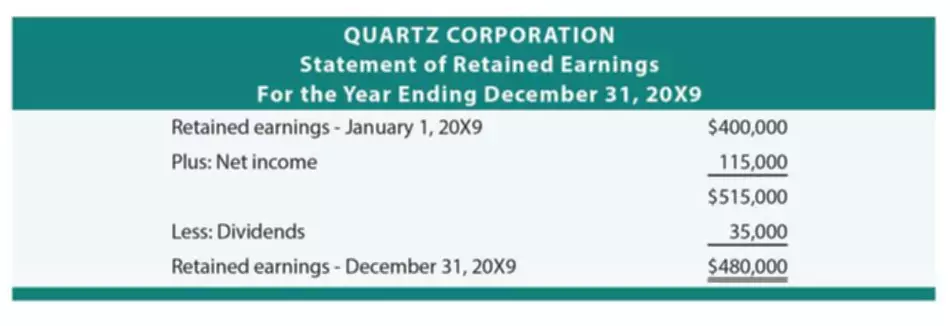Content

However, there are several “buckets” and line items that are almost always included in common balance sheets. We briefly go through commonly found line items under Current Assets, Long-Term Assets, Current Liabilities, Long-term Liabilities, and Equity. The left side of the balance sheet outlines all of a company’s assets. On the right side, the balance sheet outlines the company’s liabilities and shareholders’ equity. The balance sheet of a company highlights its finances on a given date in terms of what the company owns and owes. Fundamental analysis of a balance sheet facilitates the calculation of several financial ratios, including the debt-to-equity ratio. A small business requires a balance sheet to get insight into its financial statement and overall value.
- Maintaining a simple balance sheet is a smart way to track your company as it expands.
- It categorizes your business’s assets, liabilities, and equity into further classifications of accounts and contains subtotals for each category.
- With this information in mind, let’s go over the step-by-step process of creating a balance sheet.
- Let’s take a deeper dive into what it is, why it’s important to have, and what it looks like.
- It is determined by subtracting the fair value of the company’s net identifiable assets from the total purchase price.
But, for example, signing a 12-month commitment to invest $12,000 in total, at $1,000 per month, in your friend’s business, would go on your balance sheet as a liability for $12,000. Just to make sure we are on the same page, let’s talk about some examples of personal assets and liabilities, as well as the best way to value them on your balance sheet.
The Difference Between an Income Statement and Balance Sheet
You record the account name on the left side of the balance sheet and the cash value on the right. Current LiabilitiesCurrent Liabilities are the payables which are likely to settled within twelve months of reporting.

The personal balance sheet is one type of personal financial statement; it lists all personal assets and all personal liabilities. Examples of personal assets include cash, valuable personal items, vehicles, and houses. A personal liability is any debt owed to financial institutions or other individuals. Examples of personal liabilities include home loans, credit card debt, and student loans. Use this balance sheet definition monthly or quarterly small business balance sheet template to analyze and archive your business’s assets, liabilities, and equities over monthly, quarterly, and year-to-date timelines. The spreadsheet will automatically calculate short and long-term assets and liabilities every quarter, and at the end of each year. Common financial ratios are calculated using total and current liabilities and equity.
What are liabilities on a balance sheet?
As mentioned previously, personal assets are anything an individual owns that holds value and could be sold for cash or used to pay liabilities. Line 6 lists accounts payable, which are the short-term credit accounts you owe your suppliers. This template is created to gather information on both Current and Fixed Assets.
Give example of simple balance sheet http://t.co/ekfGSN6zmm http://t.co/x2RtZKzTB4
— MyAccountingInfo (@vamert) April 9, 2015
This allows the investors to calculate the rates of return while providing an insight into the financial structure of a company. It can be used to course-correct if there are financial concerns. Sometimes personal liabilities are secured with a physical asset that is listed on the balance sheet, such as a car, or the personal liability could be an unsecured debt, such as a student loan.
Current liabilities
This excel template is created to accommodate the manufacturing department. As with assets, these should be both subtotaled and then totaled together. The inventory has increased 20% from 15,623 as in the previous year.
- Every time a company records a sale or an expense for bookkeeping purposes, both the balance sheet and the income statement are affected by the transaction.
- The company uses this account when it reports sales of goods, generally under cost of goods sold in the income statement.
- The difference between your assets and liabilities is called your net worth.
- Pay attention to the balance sheet’s footnotes in order to determine which systems are being used in their accounting and to look out for red flags.
- Returning to our catering example, let’s say you haven’t yet paid the latest invoice from your tofu supplier.
We know that accounting isn’t everyone’s favorite pastime, so we’ve broken down the important information into balance sheet basics to guide you through the process. Solvency Of The CompanySolvency of a company means its ability to meet the long term financial commitments, continue its operation in the foreseeable future and achieve long term growth. It indicates that the entity will conduct its business with ease. Cash Flow StatementA Statement of Cash Flow is an accounting document that tracks the incoming and outgoing cash and cash equivalents from a business. Share PremiumShare premium is the difference between the issue price and the par value of the stock and is also known as securities premium. The shares are said to be issued at a premium when the issue price of the share is greater than its face value or par value.
